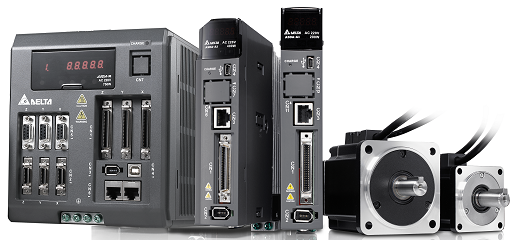
Servo motors and drives are crucial in modern automation, robotics, and manufacturing due to their precise control over position, speed, and torque. These components enable high-performance and accurate movements in various applications.
What is a Servo Motor?
A servo motor is a specialized motor designed for precise control of angular or linear position, velocity, and acceleration. It integrates a feedback sensor to provide continuous position updates to the control system, ensuring precise movement adjustments.
Types of Servo Motors
- AC Servo Motors:
- High Efficiency and Speed: Suitable for applications demanding high-speed performance and efficiency.
- Typical Uses: CNC machinery, industrial robots, and high-speed automation systems.
- DC Servo Motors:
- Simple and Effective: Easier to control with simpler electronics, ideal for straightforward applications.
- Typical Uses: Hobby projects, basic automation tasks, and educational tools.
- Brushless Servo Motors:
- Durable and Low Maintenance: No brushes mean less wear, leading to longer lifespan and less maintenance.
- Typical Uses: High-precision tasks like medical devices, aerospace applications, and advanced robotics.
- Brushed Servo Motors:
- Cost-Effective: Cheaper and simpler design, suitable for less demanding applications.
- Typical Uses: Low-cost automation where precision is not the primary concern.
What is a Servo Drive?
A servo drive is an electronic device that powers a servo motor by receiving command signals from a control system, amplifying these signals, and sending the required current to the motor to produce the desired motion. It plays a key role in the feedback loop, continuously adjusting motor performance to meet command signals.
Key Functions of Servo Drives
- Position Control: Ensures the motor reaches and maintains the exact position.
- Speed Control: Regulates the motor’s speed according to operational needs.
- Torque Control: Adjusts torque output for smooth and efficient motor operation.
Applications of Servo Motors and Drives
- Industrial Automation:
- Robotics: Provides precise control for robotic arms and automated systems.
- CNC Machinery: Essential for precise operations in cutting, milling, and engraving.
- Manufacturing:
- Assembly Lines: Controls conveyor belts, pick-and-place machines, and automated systems.
- Packaging: Ensures consistent and precise operation of packaging machines.
- Medical Devices:
- Imaging Systems: Used in MRI and CT scanners for precise movements.
- Surgical Robots: Enables high precision in minimally invasive surgical procedures.
- Aerospace and Defense:
- Flight Simulators: Provides realistic motion control for training purposes.
- Weapon Systems: Used in targeting and stabilization systems for accuracy.
- Consumer Electronics:
- 3D Printers: Ensures precise positioning for accurate printing.
- Home Automation: Controls smart home devices like automated blinds and security cameras.
Benefits of Using Servo Motors and Drives
- High Precision: Offers accurate control over position, speed, and torque.
- Efficient Performance: Provides reliable and energy-efficient operation.
- Low Maintenance: Especially true for brushless motors, which require less upkeep.
Conclusion
Servo motors and drives are essential in achieving precise control and efficiency in various technological applications. Their ability to provide exact movements and their adaptability make them invaluable in automation, manufacturing, medical devices, aerospace, and consumer electronics. Investing in quality servo systems enhances performance, reliability, and efficiency across numerous fields.


